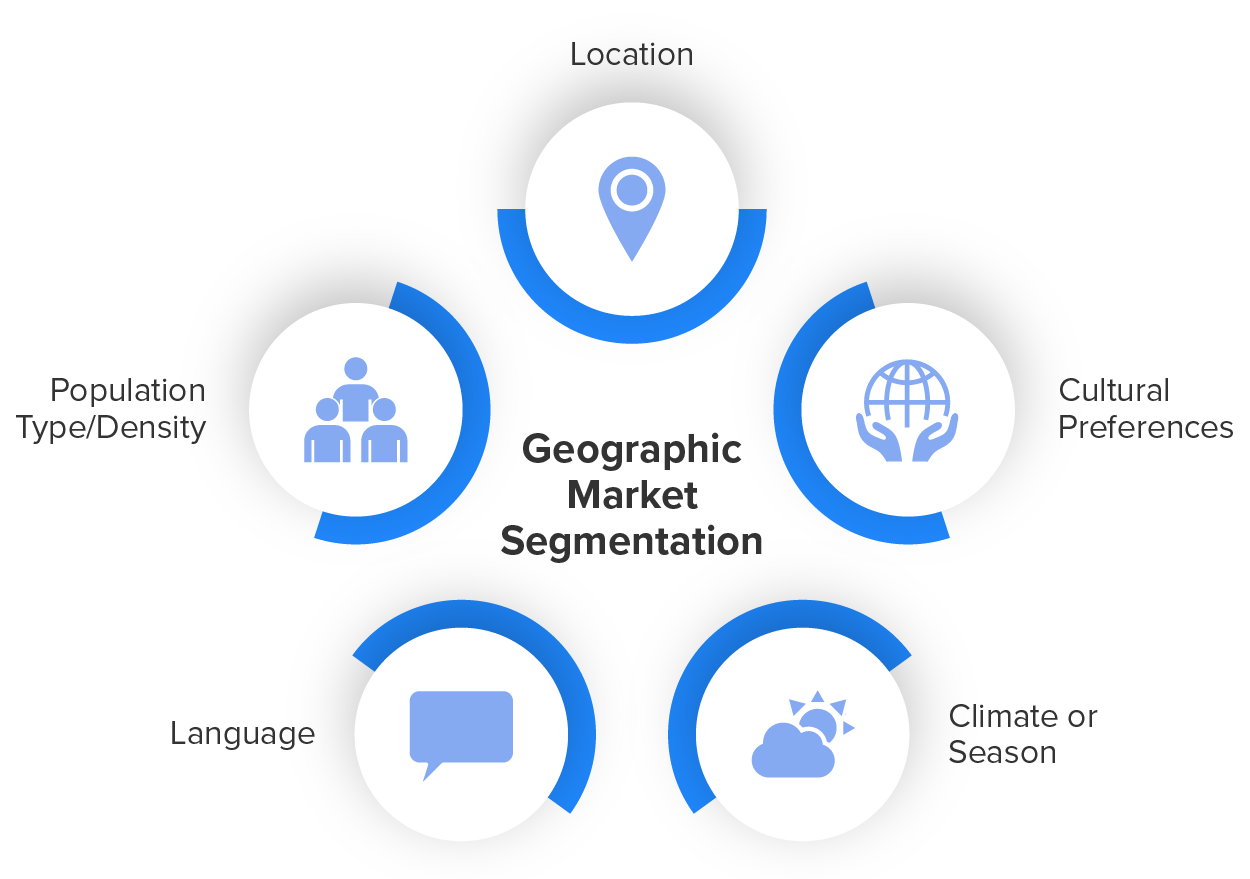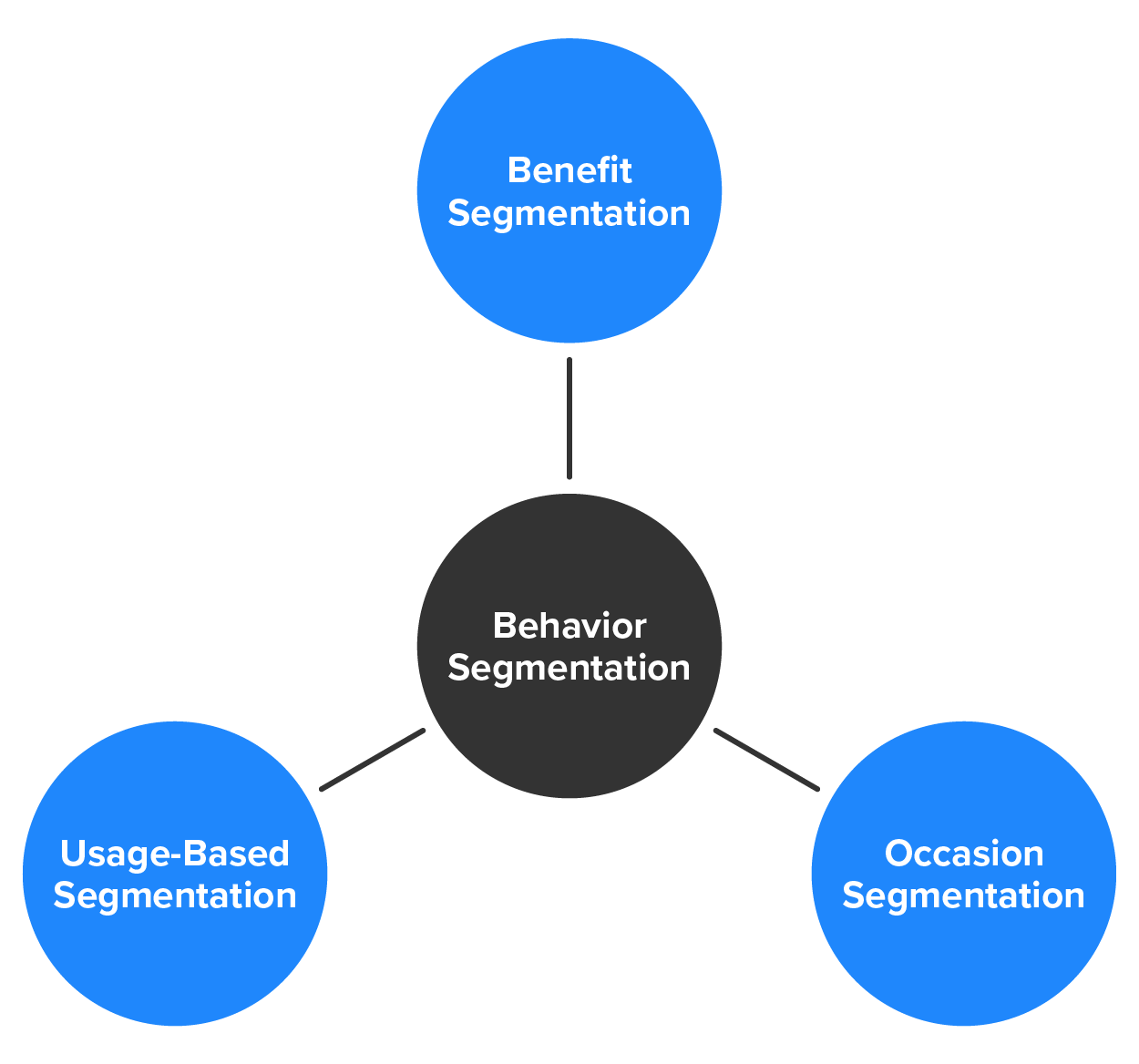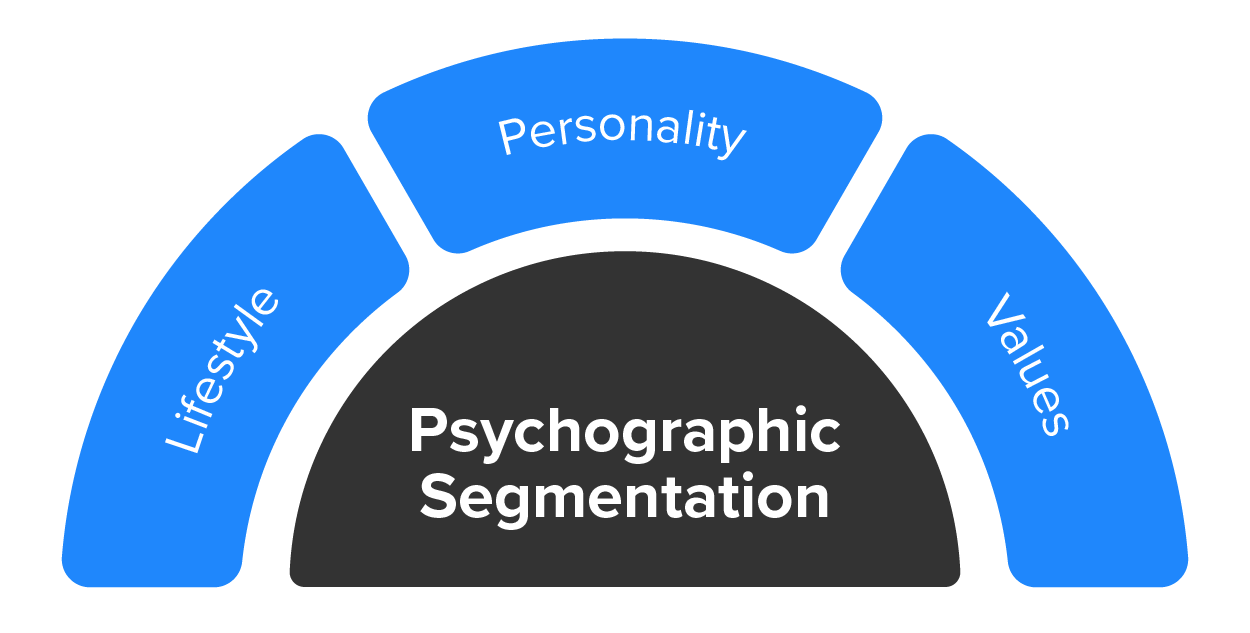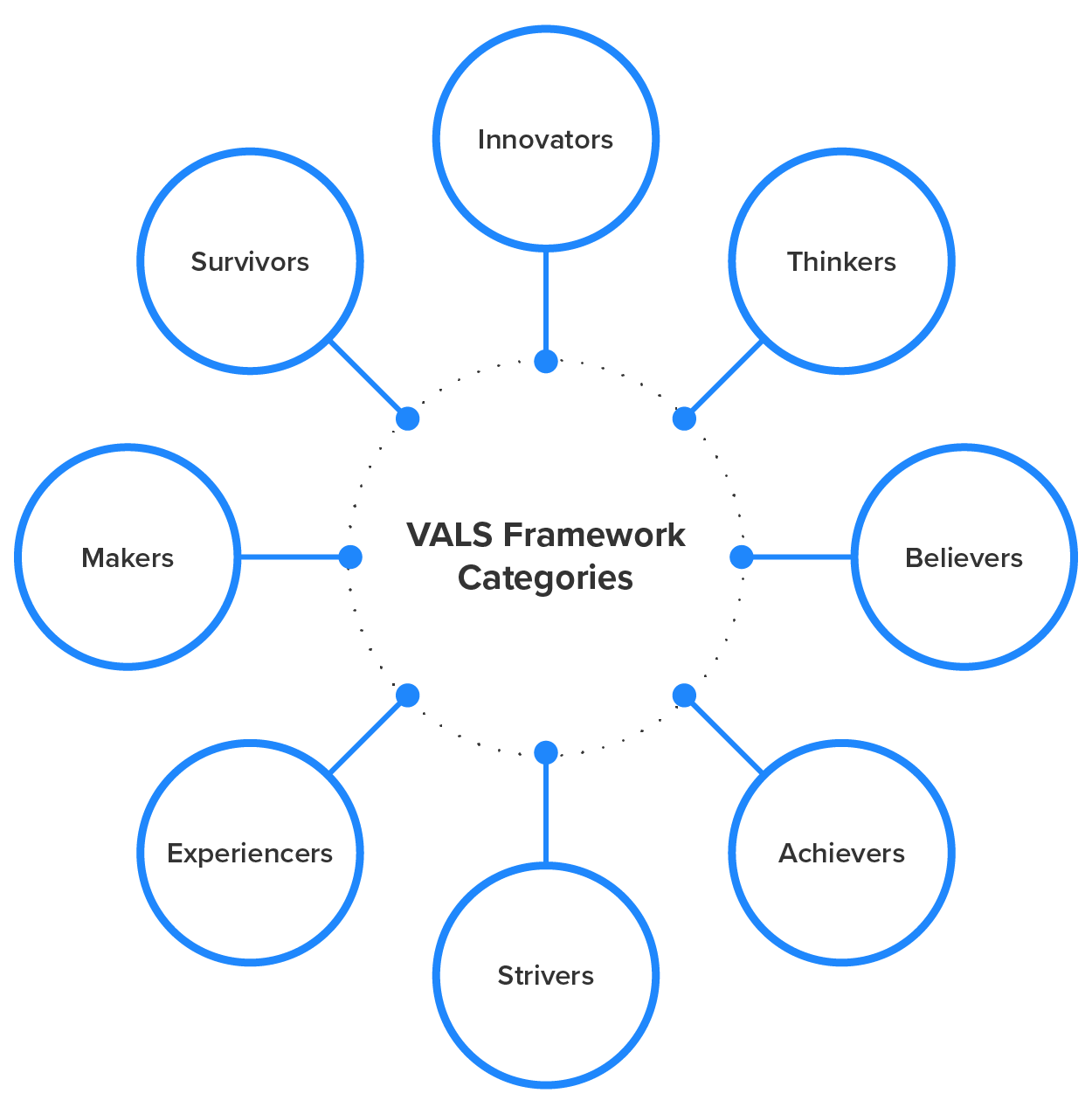Table of Contents |
You may have heard the saying, “You can’t be all things to all people.” That sums up the essence and purpose of market segmentation—the process of dividing a target market into smaller, more precisely defined groups of consumers who have common needs and are expected to respond similarly to a marketing action. There are important advantages and processes associated with market segmentation. Keep in mind that a company doesn’t have to use just one or two segmentation bases; it can use all of them or a mix of them, a process that’s also known as multi-segment marketing. It’s not uncommon for companies to develop products that compete against their own offerings as long as the new products offer different perceived benefits to consumers.
EXAMPLE
Procter & Gamble sells several different types of laundry detergent, such as Tide, Gain, and Cheer. Each of these brands offers different benefits like all-temperature use, fresh scent, unscented, stain removal, or whitening. By having these different brands, P&G can appeal to multiple target markets.It’s estimated that the average person sees over 4,000 advertising messages each day. That’s why it’s critical to target the right market. Most marketers have limited budgets, so using one marketing message to reach a broad audience may garner a few new customers, but it’s likely to come at a high advertising cost. There are other benefits to market segmentation. First, it provides an improved focus on the “important customers.” Customers are not all alike. Some will love your product or service, while others will be indifferent. Instead of trying to appeal to everyone, market segmentation enables marketers to focus their efforts and resources on those customers who will likely result in revenue for the company. Second, it provides improved product development. Market segmentation allows marketers to better understand what consumers want in a product or service, and that knowledge enables the marketer to make recommendations for refinements to existing products and services to meet those needs. This knowledge is equally important in terms of designing new products and services to meet the needs of the target market. Third, it provides improved brand loyalty. When customers feel that your company’s products or services are a good fit for them, they are more likely to stick with your brand and recommend it to others.
Geographic segmentation means dividing the market based on where your customers or potential customers live. There are several geographic parameters a marketer can use to focus their marketing efforts, including location, cultural preferences, climate, language, and population type and density.

IN CONTEXT
Segmenting the market on the basis of location can be as small as a county or zip code or as large as a country. Segmenting a market this way can also be used to identify a new geographic location into which the business may wish to expand. Starbucks is a great example of a company that uses location segmentation, which means dividing the market by customer locations. First, the company segments its markets according to global geographic segmentation, which means dividing the market by customer locations around the world—the Americas, China and Asia Pacific, Europe, the Middle East, and Africa. Each of these segments is then subject to sub-segmentation in order to cater to markets that share cultural preferences, or cultural segmentation. For example, in China, where tea tends to be the beverage of choice, Starbucks offers a lengthy menu of tea-based drinks like Red Bean Green Tea Frappuccino and Black Tea Latte.
Customers’ choices and market behavior can also be influenced by their location in terms of climate or season segmentation, which means dividing the market by climate type or seasonality. Segmenting the market this way also allows the marketer to present the most relevant information to the audience. There’s not much of a need for snowmobiles during the summer, even in northern climates, and not much demand for convertibles in the middle of winter in those same northern climates.
Language segmentation, which means dividing the market by customer language type, can be used to divide a market geographically. For instance, there are a number of different languages spoken in different regions and states in India. Therefore, it stands to reason that an advertisement in the Hindi language would miss the mark in states where Assamese or Telugu is spoken. These advertisements would need to be translated for people in different regions.
Finally, the marketer can segment the market on the basis of population type or density segmentation, which means dividing the market by the population characteristics in a geographic area—in other words, whether the market is urban, suburban, or rural. Think about this in terms of a company that does home lawn treatments like fertilization, weed control, or grub control. That company would likely have more success targeting a suburban area where residents need extra yard care.
With demographic segmentation, the marketer will divide the market into smaller groups, generally on the basis of common demographic factors such as gender, income, age, educational level, race, religion, ethnicity, occupation or job type, and even family structure. These smaller segments enable marketers to focus their efforts and resources on those customers who will likely result in revenue for the company.

With gender segmentation, the market is divided into men and women. Those who identify as men and those who identify as women have different interests in terms of shopping for various products like apparel, shoes, and food.
EXAMPLE
Look at the ad campaigns crafted toward women in fashion magazines such as Vogue or Vanity Fair. You’ll likely see a different ad focus in magazines like GQ or Men’s Health.Income segmentation involves segmenting the market on the basis of monthly or yearly income. With income data, a company can determine how its potential consumer base spends money on both the high and low ends of the spectrum. Mercedes-Benz is a classic example of this, as it markets different car models at different price points: A-Class vehicles starting in the low $30,000 range, C-Class in the $40,000–$55,000 range, E-Class in the $55,000–$72,000 range, and, finally, its S-Class vehicles, which are priced at $95,000 and up.
Age segmentation is another common factor used to divide consumers. It’s likely no surprise to you that our preferences change with age. Age can be segmented based on age range, which represents a specific age group, such as children, teens, adults, and older adults. It can also be segmented by life cycle or life stage. In the same way that our preferences change with age, they change with our life stage, and most people typically pass through many life stages, from childhood to adolescence to young adult, middle age, and older adult. It can also be generation-based. This method of breakdown defines age by generation, such as baby boomers, millennials, and Generation X. Consumers within generations will differ slightly in age, but these generational cohorts still tend to share certain characteristics and ideas.
Education segmentation is another means through which marketers can divide a market, and it also affects the channels through which marketers reach the target market.
EXAMPLE
If you were going to open a bookstore in your hometown, you’d want to determine the average educational level in your community as part of your due diligence. Are most of your would-be customers elementary or middle school students? Their tastes in reading will be considerably different than if you live in a college town populated by a number of literary professors who prefer the classics.Race, ethnicity, and religion segmentation can be used to divide a market. It’s always dangerous to stereotype, but consumers of different races, ethnicities, and religions have different preferences and needs. IMAN Cosmetics is designed for women with darker skin tones, so its target market would likely be women of color.
Marketers can also divide the market based on occupation or job type segmentation. Focusing on a smaller segment of the market enables a company to make better use of its limited resources. Saf-Gard is a producer of safety shoes and work boots that meet or exceed safety standards. This company targets workers in the construction and farming industries.
Finally, a company can divide its market on the basis of family structure segmentation, including marital status, whether there are children in the home, and the life stages of those in each family.
Behavioral segmentation divides consumers into market segments depending on their behavior patterns when interacting with a product or service.

The behavioral pattern benefit segmentation focuses on which benefits or features of a product or service are most applicable to the customer. Consider toothpaste. People who buy toothpaste may do so for a variety of reasons—sensitive teeth, tartar control, whitening, fresh breath, cavity prevention, etc. This means that two consumers may look identical in terms of their demographics but could have very different values regarding the benefits and features that are most important to them.
Occasion segmentation divides consumers (or potential consumers) on the basis of the occasions when they make purchases or plan to buy. Just look at the number of internet or TV ads advertising chocolates, flowers, and jewelry in the weeks preceding Valentine’s Day or the sudden appearance of PEEPS and chocolate bunnies before Easter.
Usage-based segmentation identifies various segments of users based on how much they use a product. Consumers are typically divided into groups of non-, light, medium, and heavy product users. As a general rule, companies target heavy users because, although heavy users may be a relatively small percentage of the market, they generally account for a high percentage of total buying. This is actually called the Pareto principle in marketing, which asserts that 80% of a company’s revenue comes from the top 20% of repeat or loyal customers.
Psychographic segmentation breaks down consumer groups into segments that influence buying behaviors, such as lifestyle, personality variables, and values.

IN CONTEXT
A person’s lifestyle provides insight on what they value, or how they spend their time and money. Marketers analyze three lifestyle dimensions, commonly called AIO (activities, interests, and opinions) variables. Activities focus on a person’s daily routine and/or hobbies. For instance, if you’re an urban dweller who rides your bike to work and works out regularly, your buying patterns are probably going to be vastly different from someone who drives to work and doesn’t work out. Interests drive passions. What are your interests? Crypto investing? Gaming? Photography? That’s important information to marketers because by identifying your interests (assuming you’re a target consumer), they can more easily determine what marketing messages will appeal to you. Opinions matter, and especially in the age of social media, opinions spread fast. Companies monitor social media sites to gain insight about consumers’ opinions of their products or services and respond accordingly—and quickly! Companies such as PepsiCo and Mastercard continuously monitor 24/7 all social media postings about their companies, products, and competitors worldwide.
Marketers can also segment a market based on personality variables to create a group of people with similar personality traits because personality and purchasing habits are strongly related. To illustrate this, look at the fitness tool Mirror. This interactive home trainer has performed well in the market since its inception in 2018 because it targets those people who want to work out but can’t find the time to go to the gym.
Values are the principles and important things that influence the way you live and work. As one example, environmental concerns are becoming a value issue for consumers, and they are looking for products from companies that are better for the earth. In addition to the AIO model of psychographic segmentation, there is another model known as VALS (values, attitudes, and lifestyles) that segments consumers into eight different types. The premise of VALS is relatively simple: If you know what consumers are thinking, you will know which promotions or marketing messages will attract them to your product or service. And you can use the framework to determine what consumers are thinking by determining their values, attitudes, and lifestyles. The VALS framework has eight categories: innovators, thinkers, believers, achievers, strivers, experiencers, makers, and survivors.

Source: THIS TUTORIAL HAS BEEN ADAPTED FROM OPEN STAX’S PRINCIPLES OF MARKETING COURSE. ACCESS FOR FREE AT https://openstax.org/details/books/principles-marketing. LICENSE: CREATIVE COMMONS ATTRIBUTION 4.0 INTERNATIONAL.